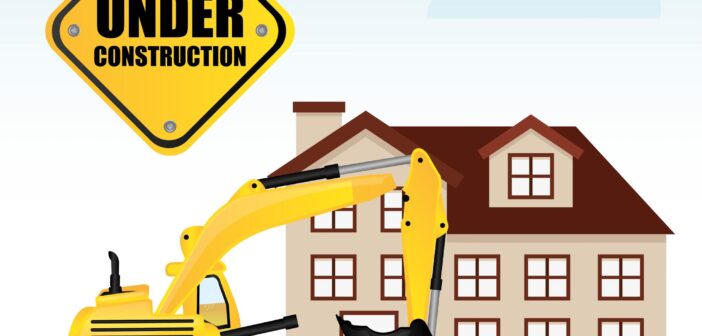PMAY (Pradhan Mantri Aawas Yojana) is once again in the news after the Union Budget 2023-24. But a project that should have been seen as a mission is in the news for some wrong reasons. It’s not just the fact that the Government of India has not clarified its achievements with Housing for All by 2022, but Track2Realty finds there are data discrepancies with the project as well.
Housing For All was supposed to be by 2022. Has the deadline been missed? Or has the Government of India extended the goal post? Why is it not being celebrated if the target has been exceeded, or even met? Let’s not get into statistics because all the data of PMAY, including government data is more often than not either confusing or contradictory, or both. It’s like Duckworth Lewis method of calculation in cricket.
If PMAY has indeed been a success story then why has the affordable housing been worst hit in recent times? Isn’t it a fact that the luxury housing is growing in India while the share of affordable housing is reducing?
India, as a matter of fact, is a complex country; it needs its own solution. World Bank report says 49% Indians are living in either slums or slum like habitation. Let’s face the fact that PMAY right since its inception has been an over-ambitious project, keeping in mind the ground realities of the country.
Problem is that at the very conceptual level, Urban Housing and Gramin (Rural) housing was seen from the same lens. Then, it was supposed to be implemented with the Center-State Partnership, and we all know that when it comes to Center-State Partnership a lot of variables come into the play, including favourable and non-favourable treatment with the States.
Then there is problem of our inefficient bureaucracy that was supposed to monitor the progress of PMAY. The target demography of poor more often than not have issue with credit reliability and credibility. Our financial institutions too are having legacy issues of NPAs
Irony is that in a country where we have legacy problems with no concept of social housing, PMAY had several challenges to face. In terms of its financial modelling, the data available in the public domain suggests Centre’s contribution to the overall investment expenditure is just about 25%, or INR 2.03 lakh crore. The bulk of the money is shelled out by the beneficiary households themselves, that is 60% or INR 4.95 lakh crore.
It should have been a better kickstart had it been tried with affordable rental housing for urban migrant poor working class. If PMAY is not so successful, it is because the project is not critically linked with the income producing ability of the beneficiaries. In many cases, the beneficiaries of PMAY grant didn’t start work; and there had been issue of recovery. CAG has also flagged irregularities in many cases.
It is indeed ironic to look at other countries for a country where culturally housing is the best instrument of social security. The Union Budget 2024-25 has provision for 3 crore additional houses; but what needs to be done is to assess where have things gone wrong. Holistic planning is needed not only for mistakes of past but not to make mistake in future.
Many countries with large demographies and housing shortage have encountered multiple problems, including severe shortage, lack of investment, unequal distribution, corruption, inefficient management and poor maintenance.
India’s closest parallel is China where it took 30 years of reforms. But today Housing for Poor is part of social security system in China. China has also put to rest the theory that most populous cities (due to rapid migration) turn into slums, with many Chinese cities turning into slum free cities.
It’s a myth that mass urbanization creates slums; it only creates slums when the minimum wages are not in sync with basic living standards. In India, we can’t compare with mass housing of China where employment, meaning credit reliability and credibility, is the differentiator. But we can definitely learn from China.
Th biggest learning from mass housing of China could be that it has robust public rental housing policy, government subsidized rental housing and shared ownership. China also doesn’t allow builders to hike prices as much as rich can absorb.
Track2Realty View
PMAY needs to be revamped keeping in mind the ground realities of the nation. Policies for PMAY Urban & Rural have to be rolled out keeping in mind the credit reliability & credibility of the beneficiaries. It also has to be linked with the income-producing ability of the beneficiaries.
Ravi Sinha
Twitter: RaviTrack2Media
Ravi Sinha is a journalist with over two decades of cross-discipline media exposure. He is the CEO of real estate thinktank group Track2Realty. He has been writing extensively on the real estate sector for more than a decade now. Evaluation of real estate brand performance is his core domain expertise and he has immense insight into consumers’ psychograph. He has conceptualised Track2Realty BrandXReport as India’s 1st & only objective & non-paid brand rating journal that is industry-accepted benchmark of brand equity & ranking of the Indian real estate companies.
Track2Realty is an independent media group managed by a consortium of journalists. Starting as the first e-newspaper in the Indian real estate sector in 2011, the group has today evolved as a think-tank on the sector with specialized research reports and rating & ranking. We are editorially independent and free from commercial bias and/or influenced by investors or shareholders. Our editorial team has no clash of interest in practicing high quality journalism that is free, frank & fearless.
Subscribe our YouTube Channel @ https://bit.ly/2tDugGl





